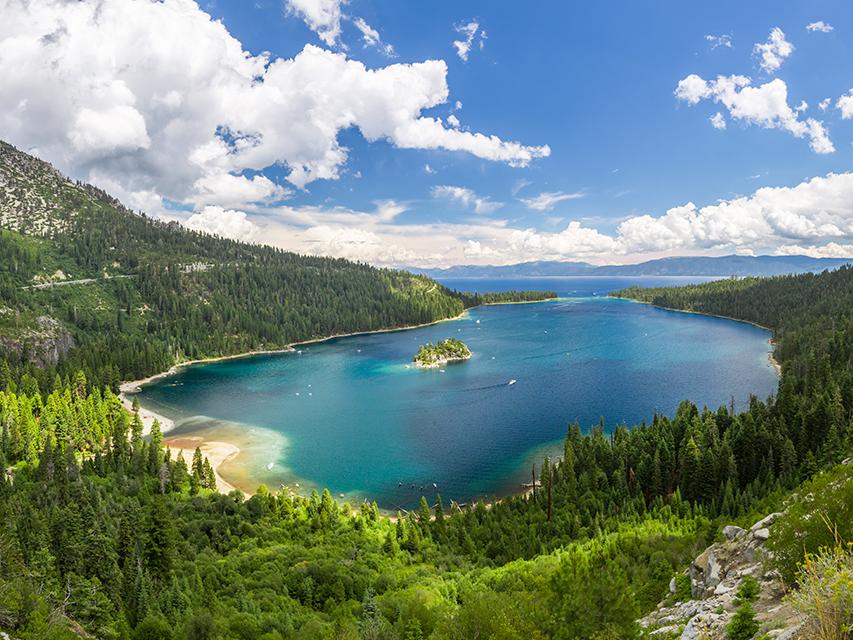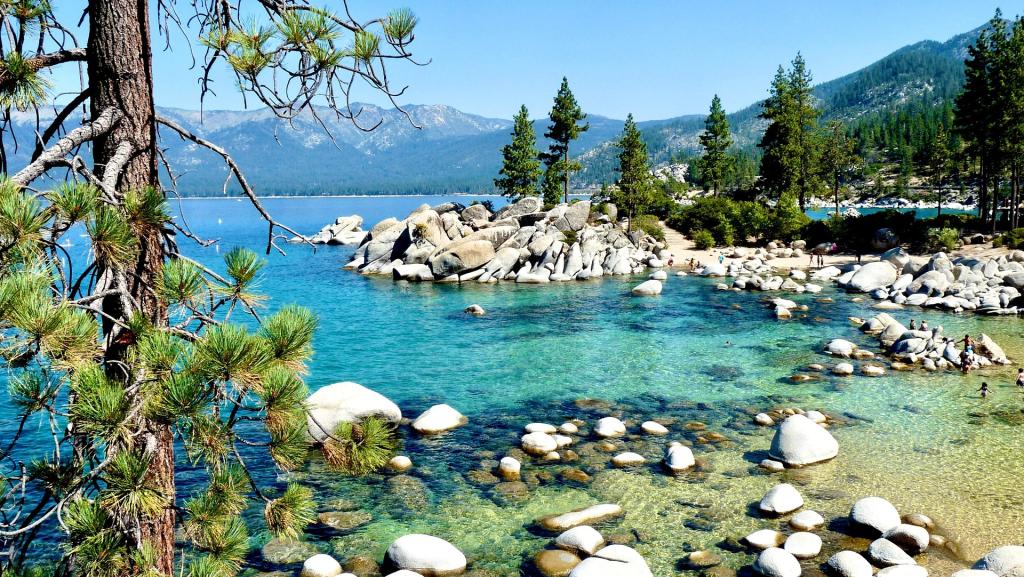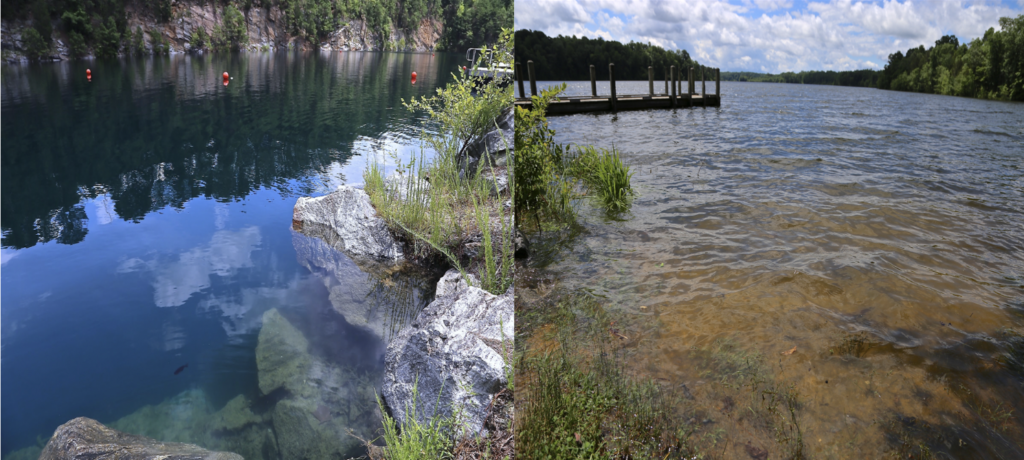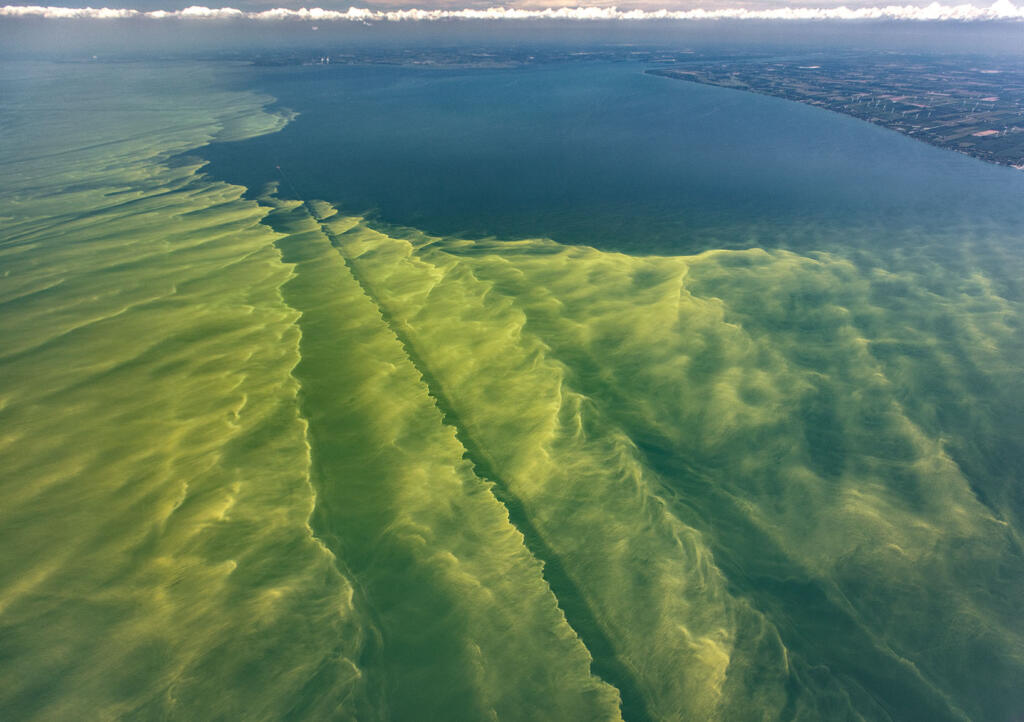
Like snowflakes, no lake is exactly like another one. They come in all kinds of shapes, sizes, and locations. But perhaps the most striking quality of a lake—one of the first things you notice about any body of water—is its color. Lakes can come in all many colors, from the clear blue waters of Lake Tahoe to the murkier opacity of many lakes in the Northeast. To be clear, no pun intended, no single color is better than the other, and every lake has its unique benefits. But why is there such a range in color among lakes across the United States?
Clear Lakes

No lake is 100 percent consistent in its coloring; depending on the season, climate, and a multitude of other factors, the appearance of every lake is always changing. But some lakes are indeed naturally much clearer than others. The clarity is generally due to low levels of algae, which occurs when the soils surrounding a lake are fast-draining and healthy. Soils with high levels of plant nutrients such as nitrogen and phosphorus can spur the growth of algal blooms, which further muddy the waters by supporting increased fish populations. The clarity of these lakes causes them to appear blue to the human eye. Unaffected by algae and other detritus, the relatively pure water of these lakes absorbs longer-wavelength red, orange, and yellow light, causing mostly blue light to reflect outwards.
Murky Lakes

On the flip side, certain lakes can appear particularly green due to high levels of chlorophyll-containing algae. If the environment surrounding a lake hits the right nitrogen and phosphorus levels, light levels, temperature, and pH, algae are likely to run rampant. Most algae is completely harmless. As a hearty fish food, algae can even be beneficial for lakes stocked for fishing. However, lake homeowners should be wary of certain harmful algae. Filamentous green algae, for example, can form clouds of algal materials in the air, a severe bother for boaters and swimmers.

While some murky lakes are green, others have a brownish tone. Like a more pleasant-sounding term, lake connoisseurs call them “tea-colored.” In reality, brown lakes are just as vibrant and healthy as their clear counterparts. Water can become tea-colored when tannins from plants in or near a lake leach into it, steeping the lake much like water in a teacup. There’s nothing inherently unsafe about swimming or boating in tea-colored water; the only real danger presented by this murkier type of lake is that submerged logs or other underwater debris might be more difficult for swimmers to spot.
Recent Trends

Since the colors of most lakes are continually shifting, there aren’t many hard-and-fast statistics about lake colors in America. But the general trends are clear enough. Studies done between 2007 and 2012 found that the proportion of clear-water lakes in America dropped by 18 percent, while murky lakes increased in number by nearly 12 percent. While this change isn’t inherently bad, researchers warn that such a rapid shift indicates that human factors are having a significant impact on the composition of the world’s lakes. If your hometown lake goes from clear blue to bright green, it might be worth bringing in an expert to figure out what’s going on.
Whether your preferred lake color is blue, tea-colored, or green, Lake Homes Realty covers a lake that provides the lifestyle you are seeking. Shop our thousands of listings to find the hue that’s right for you.

